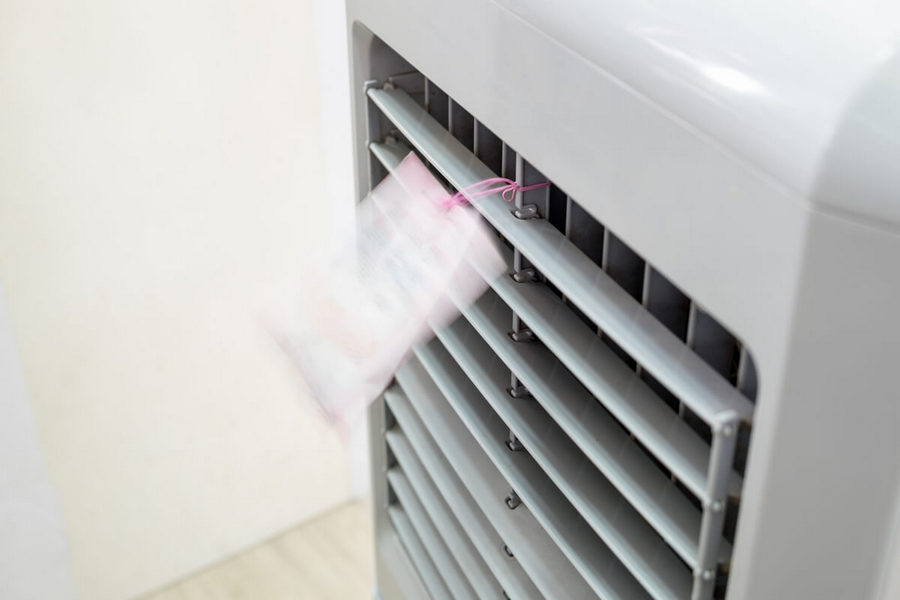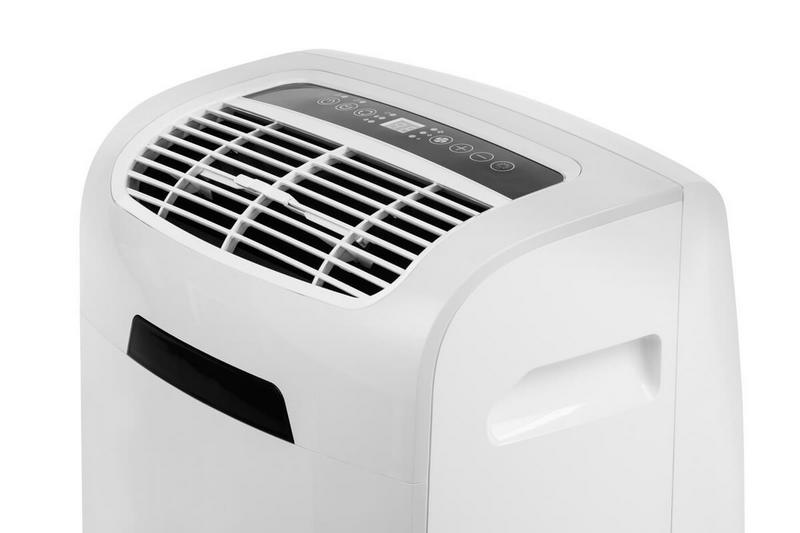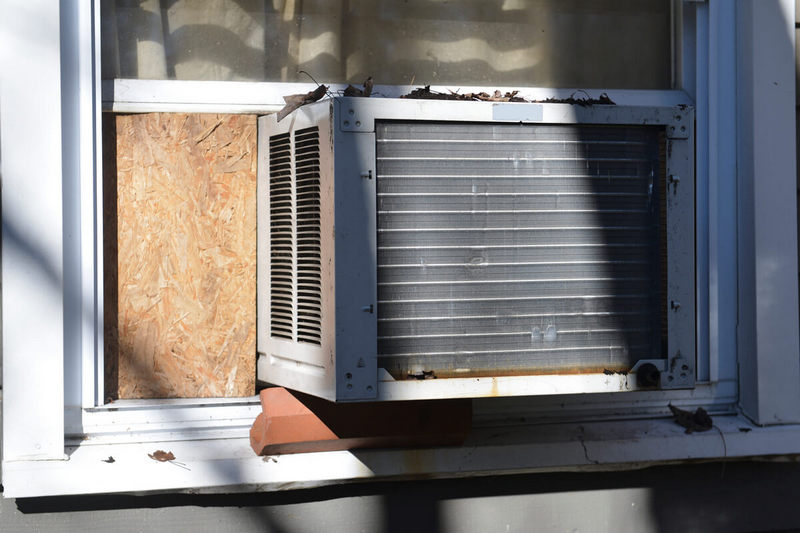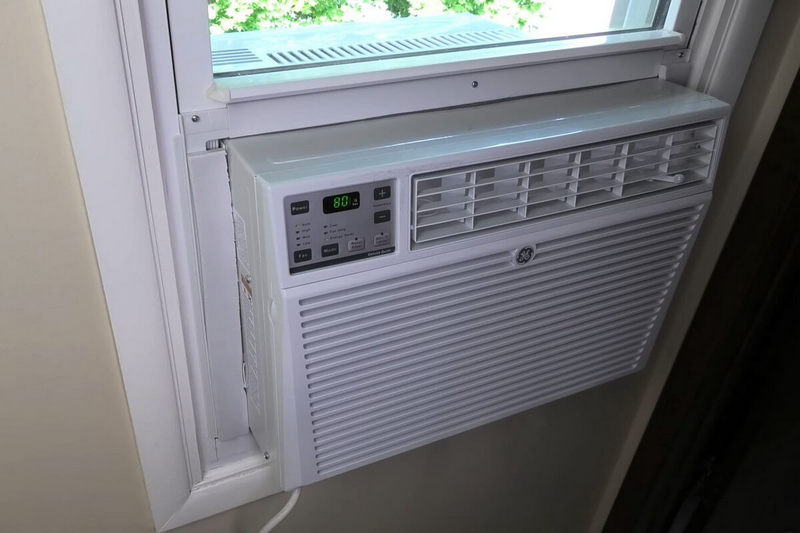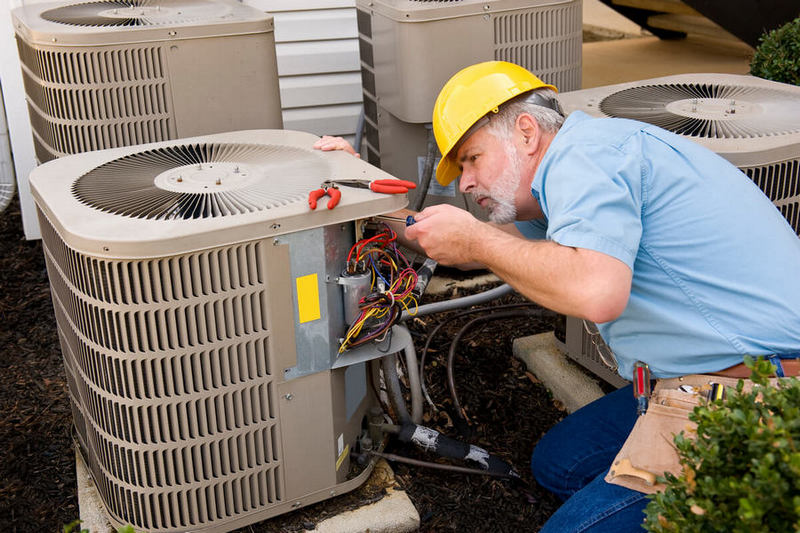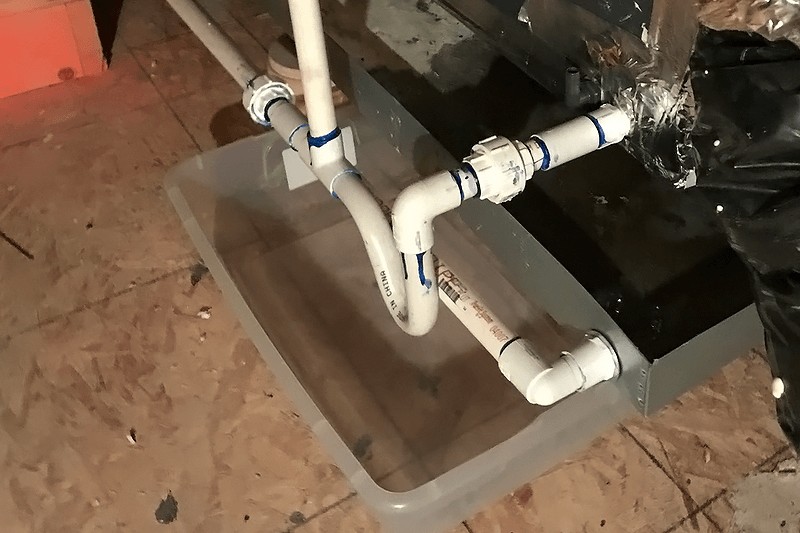Evaporative coolers, aka swamp coolers, seem like a perfect home cooling solution. They have numerous advantages over regular air conditioning systems. They are cheaper to install, easier to maintain, and are much more merciful towards your utility bill.
As the name suggests, their operating principle is based on using evaporation to cool down the air. Because of that, many people reasonably wonder if they are any good for a humid climate. Find out the principles of evaporative cooling and if high humidity will affect its efficiency.
How an Evaporative Cooler Works
Suppose you are familiar with how an air conditioner works. Hot and humid indoor air is passed through evaporative coils filled with refrigerant gas. That gas evaporates and is pumped into an external unit, while the air gives off heat and loses humidity.

Evaporative cooling works similarly to it, but instead of evaporative coils, hot air is passed through moisturized paddings. The heat in the air is captured by water in those pads. Also, instead of recirculating, these coolers suck the air in, creating a constant flow.
Evaporative coolers can be divided into three types:
- Direct: energy-effective and portable.
- Indirect evaporative cooler: no additional humid, more powerful.
- Mounted: swamp coolers with the ability to install on different parts of the house.
This type of cooling requires only a quarter of the energy consumed by regular air conditioners.
Besides that they have the following advantages:
- 50% cheaper to install
- Give a constant airflow from the outside
- Increase humidity, which can be helpful in a dry climate
Does Evaporative Cooling Work in Humid Climates?
Evaporative coolers perform better with hot and dry outside air but are still fit for humid climates. They are even used in north-eastern Europe, a region with mostly humid weather. However, each type of cooler performs differently when they work in high humidity.
Direct evaporative coolers are operating on the ability of air to chill when absorbing water. The relative humidity indicator shows how much vapor a volume of air is already holding. This means that direct coolers are less productive when the RH figure gets higher.
The indirect ones work in a slightly different way, which makes them perform better in humid conditions. They pass air through heat exchangers — water-filled tubes — and that evaporation itself takes place in a special chamber. This way, they can not only deliver cooler air but also make it dry, just like regular ACs.
To get maximum efficiency, take a look at mixed system coolers. They incorporate both indirect and direct cooling methods and cool the air in two stages. As a result, the incoming airflow has both lower dry-bulb and wet-bulb temperatures.
Do Evaporative Coolers Increase Humidity?
Unlike regular AC, direct evaporative coolers bring down the airflow temperature by saturating it with water. The incoming air becomes cooler but gets more humid than the outdoors one. Since the combination of the right temperature and humidity make indoors comfortable, raising the room’s humidity may be a good thing. To let excessive air and moisture out, it is better to leave some windows open when a cooler is operating.
If you want to make use of the cost-efficiency these evaporative coolers can provide, but the need for dealing with excessive moisture doesn’t sound good to you, go for indirect evaporative coolers. They cost a bit more to install and can be not portable, but due to different cooling processes, they add no moisture. Also, here, the intake can be preheated making the unit more effective.
Read Also: 7 Ways to Reduce Moisture and Humidity in Your Garage
How Much Humidity Does a Swamp Cooler Add to the Environment?
This number depends on various factors, such as outside weather conditions, the cooler model you have installed, and how long it will be running. On average, after a certain time, a swamp cooler can add from two to five percent of moisture to the environment. In most cases, this change will go unnoticed and won’t cause discomfort.
To make sure humidity doesn’t build up, the area must be properly ventilated. Be advised that those coolers don’t recirculate the air but constantly deliver more from the outside. By keeping an open window, you will also let warm air escape and get replaced by a fresh one.
Evaporative Cooler Humidity Chart
To better understand what temperature you can expect from your evaporative cooler depending on the climate where you live, use the next chart.
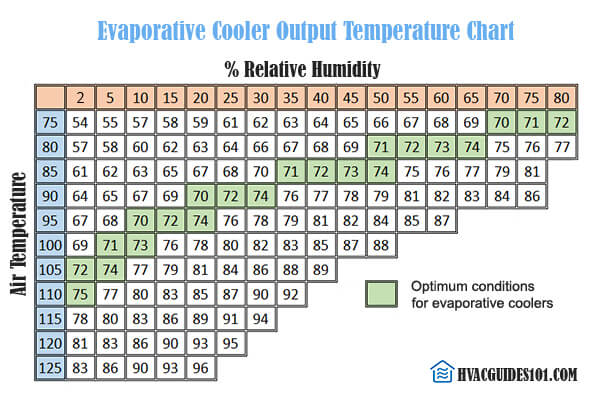
On the Y-axis, it has outdoors temperature in Fahrenheit, and RH in percent on the X-axis. To find the temperature your unit can reach, use the usual outdoor temperature and RH under which it will operate. For example, if the outdoor temperature is 90 ℉ and relative humidity is 60%, you’ll get 82 ℉ indoors.

